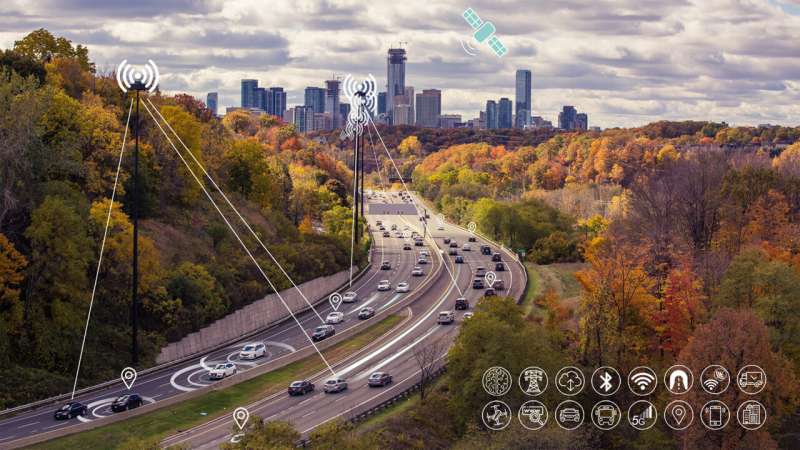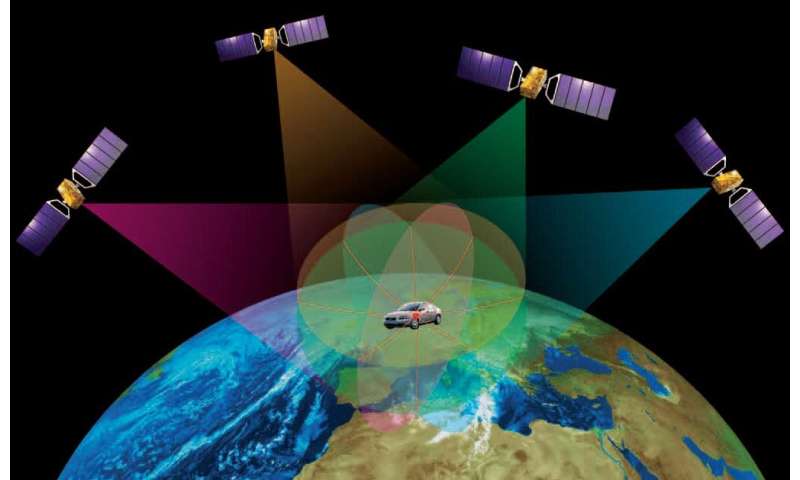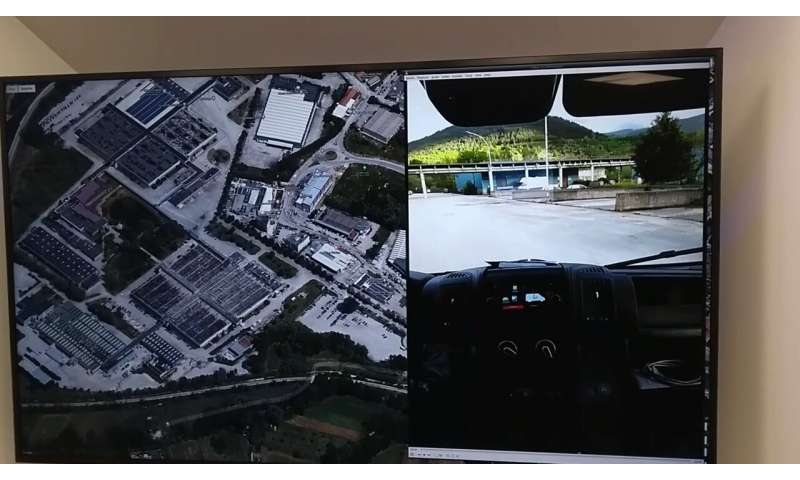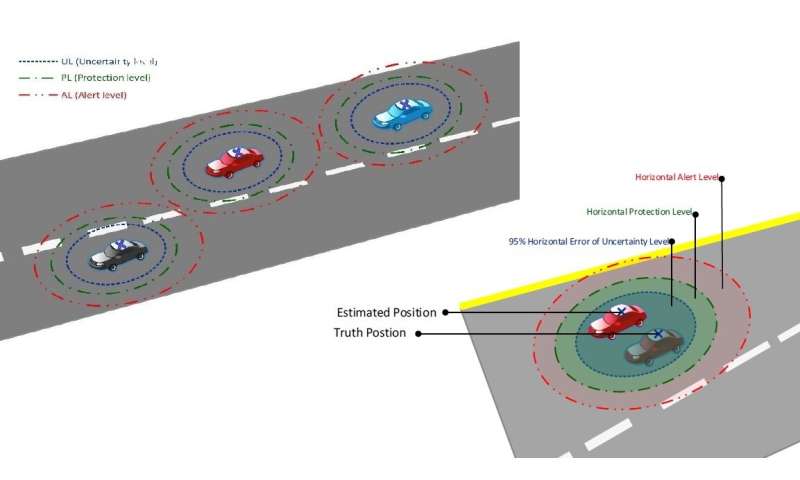
An agreement signed yesterday looks to extend the use of ESA space technology along European roads. The Agency’s Navigation Directorate has finalized a Memorandum of Intent with ERTICO, the organization for the European Road Transport Telematics Implementation Coordination, a public-private partnership focused on the development, promotion and connection of intelligent road systems and services.
The collaboration between ESA and ERTICO is intended to support and promote the development and commercialization of future, more sustainable technologies in the transport and mobility sector. Achieving a green transition in this sector is particularly important, as it accounts for about 23% of global CO2 emissions, of which almost half (45%) are coming from cars and another 30% from trucks. Increasing the use of space for a green future is part of ESA’s strategy to accelerate the use of space.
“Today’s memorandum represents a big step towards a more efficient, safer and sustainable transport sector in Europe by the use of space-based applications and services,” comments Javier Benedicto, ESA’s Director of Navigation. “Through various activities including European co-funded projects, innovation platforms and international cooperation advocacy, the partner members of ERTICO have been advancing the state of the art in transport for more than two decades.
“ERTICO’s comprehensive roadmap defines a future where vehicles communicate with each other, the roads they drive on and other infrastructure—but also highlights the fundamental need for ubiquitous, precise, and reliable positioning, navigation, and timing information—PNT. This is the very focus of ESA’s Navigation Innovation and Support Program, NAVISP, so the potential for synergy is evident and enormous.”
Involving many of the engineers who oversaw the development of Europe’s Galileo satnav system, NAVISP is looking into all kinds of clever ideas about the future of navigation: ways to improve satellite navigation, alternative positioning systems and new navigation services and applications. The program is divided between a trio of elements: NAVISP Element 1 supports innovation in PNT, with Element 2 focusing on industrial competitiveness, including novel technologies and services and Element 3 devoted to supporting participating Member State priorities, such as developing national PNT test areas.
NAVISP projects have already addressed intelligent road systems and services across all three program elements. With aviation the safest mode of transport, Element 1’s IMPACARS project looked into extending the aviation-based concept of “integrity” to automobiles. Element 2’s Road Sounder project involved low-cost devices that can be placed aboard vehicles to monitor the status of road surfaces, while Element 3’s P-CAR is supporting the development of a laboratory for autonomous driving in Italy.
“There is still much more to do in supporting the transition to safer and more sustainable traffic systems in the future, and today’s new cooperation effort helps make that possible,” adds Rafael Lucas, Head of NAVISP’s Technicial Program Office.
“Because ERTICO bridges so many different actors—service providers, transport companies, research institutions, universities, public authorities and the connectivity industry as well as vehicle manufacturers—this cooperation opens up a huge number of unique starting points for future research, bringing our work closer to the market and increasing opportunities for commercialization of space-based applications.”
-

Your satnav receiver needs a minimum of four satellites in the sky, their onboard clocks synchronised and orbital positions monitored by global ground segments. It picks up signals from each satellite, which each incorporate a precise time stamp. By calculating the length of time it takes for each signal to reach your receiver, the receiver builds up a three-dimensional picture of your position – longitude, latitude and altitude – relative to the satellites. Future receivers will be able to track Galileo satellites in addition to US and Russian navigation satellites, providing metre-scale positioning accuracy almost anywhere on or even off Earth: satnav is also heavily used by satellites. Credit: ESA
-
![ESA technology for safer, smarter European roads]()
To transfer the statistics-based integrity approach from aircraft to cars, the horizontal alert and protection levels around the test car was stretched out from a circle to an elongated ‘lozenge’ shape, taking account of the fact that forwards and backwards collisions pose a greater risk than sideways collisions. The lengths and widths of these protection levels are guided by the local speed limit, with the overall safety level guided by the study of UK and European accident probabilities, aiming to maintain safety 99.999% of the time. Credit: NSL
-

Autonomous vehicles will have two distinct sets of inputs, on the one hand sensors such as cameras, lidar and radar to know the context where the car is driving, then there is another set including GNSS, inertial measurement systems and accelerometers, dedicated to knowing where the car is driving. These two sets work independently but come together to ensure safety. Credit: RadioLabs
ERTICO—founded in 1991 at the initiative of several industry leaders and the European Commission—is a public-private partnership organization with close to 120 members, connecting different sectors in the intelligent transportation system community.
“Our ‘Cooperative, Connected and Automated Mobility’ (CCAM) roadmap is a major focus area for us,” explains Joost Vantomme, CEO of ERTICO. “It will enable the reduction of human error—by far the largest cause of road accidents—through features such as collision avoidance, lane departure warnings and auto-parking, as well as the regulation of traffic flow to maximize the efficient use of fuel and prevent the otherwise inevitable congestion of European roads.”
An assisted or automated vehicle must fuse together data from multiple sensors—such as video cameras, lidar, radar, inertial measurement units and odometers—along with wi-fi, 5G and other communication links. For an objective measurement of its location it also requires ubiquitous, continuous PNT information.
Satellite navigation is most often used for PNT but in some environments, such as busy city centers, the signals can be cut off by tall buildings, low underpasses or unwanted reflections called “multipath”—so positioning information can be lost just when it most required. Multiple NAVISP projects are therefore looking into augmenting satnav with a variety of additional PNT sources.
Citation:
ESA technology for safer, smarter European roads (2022, August 24)
retrieved 24 August 2022
from https://techxplore.com/news/2022-08-esa-technology-safer-smarter-european.html
This document is subject to copyright. Apart from any fair dealing for the purpose of private study or research, no
part may be reproduced without the written permission. The content is provided for information purposes only.
Stay connected with us on social media platform for instant update click here to join our Twitter, & Facebook
We are now on Telegram. Click here to join our channel (@TechiUpdate) and stay updated with the latest Technology headlines.
For all the latest Technology News Click Here
For the latest news and updates, follow us on Google News.

